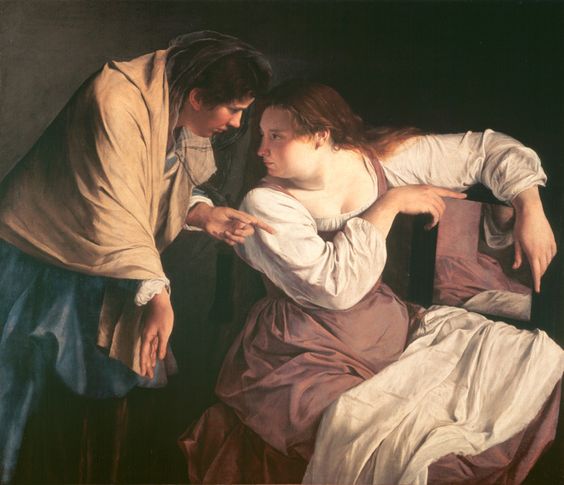There appeared in this space recently an excellent essay by the always readable, David Warren, grounded in and expanding on a point made by Cardinal Robert Sarah in his compelling, new book, The Power of Silence: “that we must be Mary before we play Martha.” This is much needed spiritual direction for our modern world, beset as it is with the Devil’s favorite tools of distraction, noise, and chaos.
I don’t in any way disagree with the principle point that a true relationship with Christ – a relationship which can only be fostered in the prayer of silence – is a necessary condition for an actively fruitful life lived according to God’s plan for our salvation.
And yet it seems whenever discussion of the Martha and Mary story comes up, Martha, in my view, gets something of a bad rap. A few years ago there appeared a book by Joanna Weaver entitled Having a Mary Heart in a Martha World. I found the latter part of the title a bit perplexing. A “Martha” world? My first thought was, “shouldn’t we remember Martha is a saint.” And can the world, particularly our modern world, truly be labeled with the name of any saint?
There’s often a certain reductionism at work here. We read the Martha and Mary story and equate Martha with the world and Mary with the spiritual. Many of us may have a tendency, understandably yet mistakenly, to restrict our knowledge of and, thus, our relationship with Martha to just this one act.
It’s as if the only thing we knew about St. Peter were his three-fold denial of Christ on Good Friday while ignoring his proclamation of Jesus as the Son of God, his twenty-five years as the first pope, and his crucifixion – upside-down.
Many know the Martha of Luke 10, fewer seem to have gotten to know the Martha of John 11 for it is evident, both in her actions and her words in John’s gospel, that she had taken to heart Jesus’ admonition given in Luke 10 that it was her sister, Mary, who had “chosen the better part.”
Remember, the Martha in Luke 10 has just met Jesus. In fact, Luke is very clear that it was Martha who initially opened her home to Jesus. By the time of the events recounted in John’s Gospel, Mary, Martha, and Lazarus have become Jesus’ good friends.

To set the scene, Lazarus has become seriously ill. Martha and Mary have sent word to Jesus, asking him to come. Jesus purposely waits two days before setting out. Hearing Jesus is coming, Martha, being the forthright woman of action to whom we were introduced in Luke, goes to meet him while, interestingly, Mary stays home.
But it’s her first words, so Martha-ish in their directness, which proclaims the faith that has enthralled and filled her soul since we first met her in Luke. She bluntly, with at least a hint of admonishment on her own part, states, “Lord. . .if you had been here, my brother would not have died. But I know that even now God will give you whatever you ask.”
Surely such faith can only result from Martha “becoming like Mary” while still remaining so quintessentially Martha.
Interestingly, Martha’s blunt statement addresses a point made by both Cardinal Sarah and David Warren concerning the mystery of suffering. As Warren succinctly notes:
Why does God remain silent in the presence of misery and evil; why does He allow the horror and suffering that falls on the just and the unjust alike? If He is there, why doesn’t He do something? This is, I think, the essential Martha question, expanded to become “inclusive” of the whole human condition.
In John’s Gospel, Martha has further advanced “the Martha question” about suffering. She has moved from a simple question about why a great teacher would allow her sister to let her do the dishes to the question asked by great saints and Church fathers regarding the existence of suffering.
And she will find the answer to that question, as all the saints do, “[I]n the silence, kneeling before the Crucifix.” Martha will have the added privilege of finding it literally at the foot of the Cross.
It is beautiful to watch the different approach Jesus takes with these two, saintly women. With Martha, he appeals to the intellect, asking her if she believes He is the Resurrection. She responds in a way similar to Peter, “Yes, Lord. . .I believe that you are the Christ, the Son of God, the one who was to come into this world.”(v. 27)
With Mary, He takes a different approach. Mary declares, like Martha, that had Jesus been there, her brother wouldn’t have died. But Jesus responds totally differently to her – he weeps.
Here, writ large, is the Mystery of the Incarnation. Jesus is God (Martha), and Jesus has become Man and entered into our suffering (Mary).
Today we are celebrating St. Martha’s feast day. Personally, I’ll be picking some mundane task, say, mowing the lawn or doing the dishes, and will offer it up as a prayer to St. Martha for her intercession that I, too, might come to know and love Christ as deeply as her words – and actions – in John 11 give testimony.














